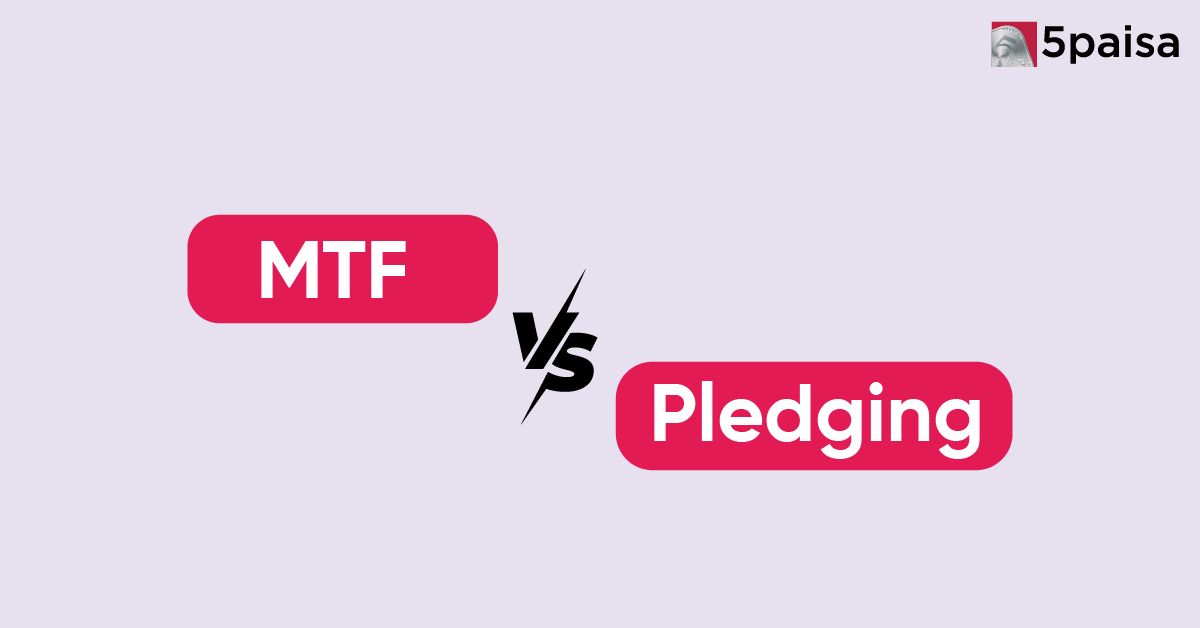MTF vs Pledging: Which Strategy Gives You More Power in the Market?
Bond basics: How to invest in bonds and how are they different from stocks?

Investors are often spoilt for choices when it comes investment options. There are a variety of investment options to choose from including equity, bonds, gold and real estate. Investors choose one or more of these options depending upon a variety of factors such as duration of investment, their risk appetite and return expectations. For instance, investors with a higher risk appetite can invest in equities. Those with a longer time horizon, can look at real estate. And those who want safer instruments should look at bonds.
In fact, bonds are considered one of the safest investment options. Let us look at what exactly are bonds, how to invest in them and how they differ from stocks.
What are bonds?
Bonds are financial instruments through which an investor lends money to a company or government for a fixed period in exchange for interest payments. The interest rate on bonds is termed as "coupon".
Simply put, bonds are instruments through which a company or government borrows from investors. They are listed as liabilities on a company's balance sheet since they are debt.
The bond prices are inversely proportional to the coupon rate. That is, when the rate of interest increases the bond prices decreases and when rate of interest decreases, the bond price increases.
Investing in Bonds Explained | Should You Invest in Bonds? | Benefits and Types of Bonds
Why invest in bonds?
Bond purchases are an effective way to diversify one’s portfolio. Bond interest can act as a supplement to one’s main source of income. Bonds can be an excellent option if one has a low-risk appetite and doesn’t want to take too much risk with their investments.
The income earned from bonds is easy to estimate and is a safer investment option than stocks as they offer a steady source of revenue. Bonds typically pay interest twice or once a year. They are a way to preserve capital as bondholders receive the principal amount when the bond matures.
How to invest in bonds?
An investor can opt to invest bonds either through primary market or secondary market.
Primary bond market: One can purchase bonds when they are newly issued by the borrower either through a public issue or private placement.
Secondary bond market: The secondary bond market is the marketplace where investors can buy and sell bonds. In contrast to the primary market, where the investor’s buys directly from the borrower, in the secondary market one buys from or sells to another investor.
Types of Bonds
The bonds can be broadly categorised into:
Corporate Bonds
A corporate bond is a debt instrument issued by a corporation in order to raise funds for ongoing operations, mergers and acquisitions, or expansion of business. One can buy a corporate bond from the primary market when it is initially issued or one purchase it in secondary market where it is traded. The price and yield of the bond are determined by supply and demand, current interest rates, and liquidity. Yield, which is the return an investor gets on a bond, depends on the bond's price and coupon.
Municipal Bonds
A municipal bond is a bond issued by local government or affiliated agency to fund public infrastructure projects. The municipal corporations provide returns on these bonds either from property tax or professional tax collected or other specific projects’ revenues.
Government Bonds
A government bond is a debt instrument issued by the Central and state governments. These bonds are issued to fund the state or central governments expenditure.
Government Bonds in India, fall under the broad category of government securities (G-Sec) and are mainly long-term investment tools issued for periods up to 40 years. The yield on government bonds is usually lower than other bonds as it offers the highest security. These relatively low-risk bonds are suitable for cautious investors.
How to buy bonds
One can buy bonds through broadly three methods:
Debt Mutual Funds: These funds are a category of debt mutual funds that invest in bonds and fixed-income securities. Within this, gilt mutual funds specifically invest in government bonds while corporate bond funds mainly put money into corporate bonds. Short-term debt funds, banking and PSU funds and target maturity funds are other types of debt mutual funds that invest in bonds issued by private companies, banks, state-run enterprises, and central and state governments.
Direct Investment: Another way to purchase government bonds is by direct investment. All one needs is a demat account and a trading account with a brokerage company. Once you have them, you can choose to buy and sell bonds.
RBI Retail Direct: This platform launched by the Reserve Bank of India allows investors to invest in government bonds.
Difference between Bonds and Stocks
Bonds and stocks are both avenues for investments and, in order to diversify the portfolio, investors often invest in both instruments. However, the weightage given to each of these investment options will depend on an individual’s risk appetite, time horizon, and financial goals. The shorter your time horizon, the better it is to hold a larger part of your portfolio in bonds and vice versa.
Therefore, one must be aware of the differences between bonds and stocks to determine their ideal investment plan.
Definition: Bond instruments where the issuing institution borrows money from the bond holder in exchange for pay interest on the principal sum. A stock is a type of investment through which an investor gains an ownership share in a company.
Type of Investment: While bonds are a form of debt instruments, stocks represent equity investments.
Investor Status: Bondholders act as a lender to the issuing institution and do not hold any stake. Stockholders are regarded as part-owners of the company.
Issuing Institutions: Bonds are typically issued by companies, central and state governments, municipal authorities, and government-backed institutions. Stocks are issued by companies.
Level of Risk: Bonds typically yield a fixed income and are rated by credit rating agencies. As a result, bonds are seen as a less risky option. The risk level is relatively high while investing in equities. Share prices are extremely volatile and can go up and down depending on the overall market.
Returns: Bonds are relatively low risk and have stable returns that investors receive as a fixed repayment in the form of interest. Stockholders receive dividends if companies make profits. Also, the returns will depend on stock prices
Voting Rights: Bondholders are lenders and do not hold any voting rights in the issuing institution. Stockholders possess voting rights.
Benefits: Bonds are seen as a safe and conservative form of investment and they can add stability to a diversified portfolio. They have assured returns and bondholders are given priority during repayment and liquidation. Stocks have an element of high-risk and high-returns.
Factors to keep in mind before investing in bonds
Investors have access to a wide variety of bonds to invest in. In comparison to stocks and other investment options, bonds are typically considered a safer investment. Bonds are not immune to risk, though, and no investment strategy is. Therefore, one must keep some factors in mind to best suit their risk-return expectations.
Investment goals: When it comes to investments, each investor has their individual preferences. Therefore, an investor must match their expectations for risk, return, liquidity, and tax savings with the actual risk, return, liquidity, and taxability of bonds.
Risk and return: Even though bonds are seen as a safer option, they are not entirely risk-free. So, if an investor has the capacity to take higher risks, they may get higher returns on their investment through other options. Therefore, they should compare the return on bonds with other sources before taking a decision.
Issuer’s creditworthiness: An investor must do their research and look at the ratings of bonds before investing, as a higher rating indicates a lower risk and vice versa.
Conclusion
All investors desire high returns, but the appetite for risk is different in them. Bonds are less risky assets than stocks, but that does not mean it is totally risk-free.
The decision on how much to invest in bond and how much in stocks should be based on return desired and the risk an investor is willing to take. It is always advisable to distribute the risk between different asset classes.
- Flat ₹20 Brokerage
- Next-gen Trading
- Advanced Charting
- Actionable Ideas
Trending on 5paisa
Indian Stock Market Related Articles
Disclaimer: Investment in securities market are subject to market risks, read all the related documents carefully before investing. For detailed disclaimer please Click here.

 5paisa Capital Ltd
5paisa Capital Ltd




